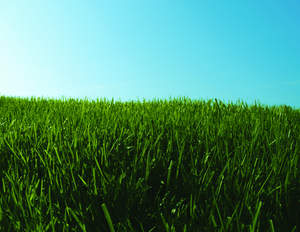MISSION, KS--(Marketwire - April 5, 2010) - (Family Features) A thriving lawn is more than a soft, friendly playground. It can help cool the environment and clean the air. And it's not hard to practice a little backyard environmentalism -- here's how it works and what you can do to take good care of your lawn.
Keeping It Cool
Through its natural processes, grass releases water to stay cool, much the same way our bodies stay cool through perspiration. Water evaporating from your lawn absorbs excess heat to keep a constant cool temperature. Because your lawn stays cool, the air above it can be as much as 30 degrees cooler than it is above your driveway, patio or sidewalks.
Cleaning the Air
An average lawn has over 11 million individual grass plants. These little green machines work 24/7 to trap dirt, dust and impurities from the air. And like all plants, grass absorbs carbon dioxide and releases oxygen, making it possible for us breathe a little easier.
How to Have a People and Earth Friendly Lawn
- Well-fed lawns are strong and vibrant. In general, feeding two to four times a year will build a lawn that is ready to stand up to weeds, heat, drought and insects. If your lawn doesn't get much activity from the kids, pets or parties, 2 to 3 feedings is enough. Feeding a couple of times a year also applies if the spring and fall seasons where you live are only a few months long. If your grass is used for ball games or parties, you'll want to feed 3 to 4 times a year so the grass can regenerate and withstand wear and tear.
- Choose a fertilizer that says "for lawns" on the bag and has a spreader setting. All-purpose fertilizers don't have the right nutrient balance for lawns and may not even have spreader settings to apply the right amount.
- Set your mower to one of the highest cut settings to give your grass an advantage over heat, drought, weeds and bugs -- and make lawn care simpler. Mowing high means more grass leaves and therefore more deep roots that reach water in the soil better. Longer grass blades crowd out weeds, capture rain water better and reduce moisture loss from the soil.
- Mow and feed your lawn at the same time by leaving grass clippings on your lawn. These break down quickly and recycle nutrients back into the soil.
- Sweep any fertilizer and grass clippings that land on driveways and sidewalks back into the lawn to keep nutrients where the grass can use these for food.
In many parts of the country, Mother Nature provides enough water for your grass to survive. These tips should guide you to deciding if you need to water.
- Sometimes when it's hot and dry, the lawn will go dormant and turn brown. Don't worry. Grass will bounce back again once it rains, especially if you've fed it well and mowed high.
- If you use your lawn as an extension of your living space, then your grass will let you know when it needs a drink. It will turn dull in color and footprints appear.
- If rain isn't expected soon, water using a sprinkler that shoots the water in a jet fashion, low across your lawn, and in the morning to reduce water loss from evaporation.
- Compared to unfed lawns, properly fed lawns tolerate heat and dry weather better than unfed, weak lawns. That's because they have better roots and stored energy reserves to bounce back when rainfall or water returns.
Get more green-spiration at loveyourlawn.us.
